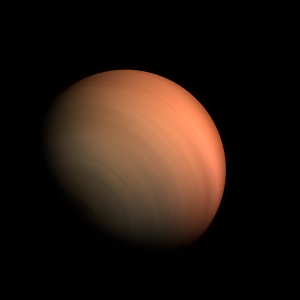|
|
Space Astro
|
Info for exoplanet "Nesodome Pan"
| Scientific (actual) data |
|---|
| Name | WASP-166 b |
| Planet status | Confirmed |
| Planet mass | 0.102 |
| Radius | 0.6155 |
| Orbital period | 5.44354 |
| Semi major axis | 0.0668 |
| Orbit eccentricity | 0 |
| Inclination | 87.8 |
| Discovered | 2018 |
| Updated | 2022-07-22 |
| Tzero tr | 2458520 |
| Lambda angle | 344.5 |
| Impact parameter | 0.213 |
| Temperature (kelvin) | 1270 |
| Publication | Published in a refereed paper |
| Detection type | Primary Transit |
| Mass measurement type | Radial Velocity |
| Radius measurement type | Primary Transit |
| Molecules | Na |
| Star name | WASP-166 |
| Right ascension | 144.88° |
| Declination | -20.98° |
| Mag v | 9.36 |
| Star distance | 113 |
| Star metallicity | 0.19 |
| Star mass | 1.19 |
| Star radius | 1.22 |
| Star sp type | F9 |
| Star age | 2.1 |
| Star temperature | 6050 |
| Wikipedia article | WASP-166 b |
Back
| |
| Fictional info (?) |
|---|
| Suggested name | Nesodome Pan |
| Planet type | Small hot gas planet |
|
| Atmosphere | Na | 99% |
| Atmospheric pressure | 40 bar |
 |
| No known satellites |
| Google search for Nesodome pan |
|
Website by Joachim Michaelis
|
|
|
|